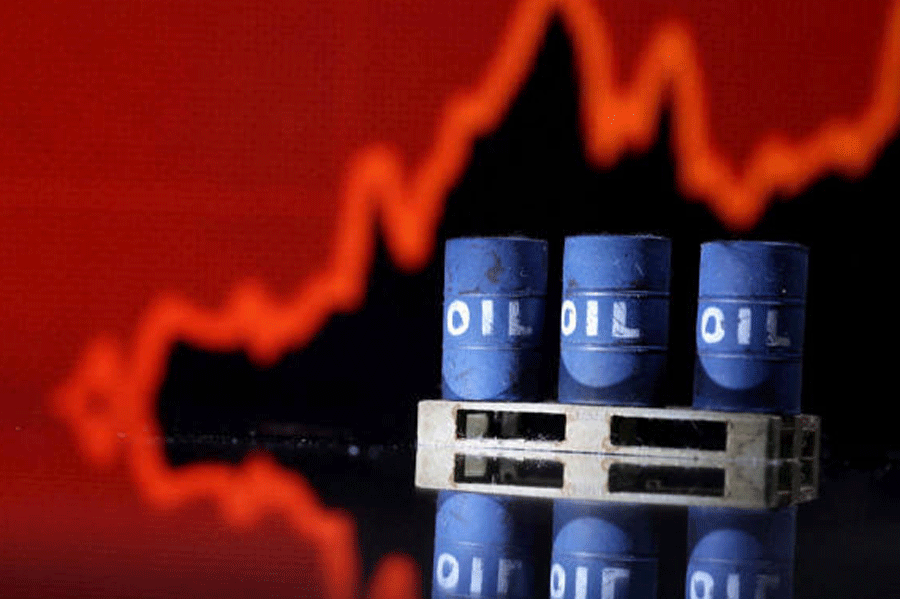Oil prices jumped more than $1 on Tuesday, signalling a fourth consecutive session of gains as weak US shale output compounded supply concerns from extended production cuts by Saudi Arabia and Russia.
Global benchmark Brent crude futures were up $1.24, or 1.31 per cent, to $95.67 a barrel by 1308GMT. US West Texas Intermediate crude futures were up $1.92, or 2.1 per cent, to $93.40.
Prices have gained for three consecutive weeks, with both benchmarks reaching their highest since last year.
“This crude price rally apparently doesn’t want to stop,” said Oanda analyst Edward Moya. “The oil market will likely be tight throughout the winter.”
Feeding those concerns, US oil output from top shale-producing regions is on track to fall to 9.393 million barrels per day (bpd) in October, the lowest since May 2023, the US Energy Information Administration said on Monday. That would be a third consecutive monthly fall.
Those estimates come after Saudi Arabia and Russia, as part of the Opec+ producer group, this month extended combined supply cuts of 1.3 million bpd to the end of the year.
Some, however, believe that crude’s price climb could be peaking.
“Oil’s ascent into overbought territory leaves the market vulnerable to a correction,” National Australia Bank analysts wrote, pointing to volatility after speeches on Monday by Saudi Aramco CEO Amin Nasser and Saudi Arabia’s energy minister.
The Aramco CEO lowered the company’s long-term outlook for global demand to 110 million bpd by 2030, down from a previous estimate of 125 million bpd.
Saudi energy minister Prince Abdulaziz bin Salman defended Opec+ cuts, saying international energy markets need light regulation to limit volatility, while also warning of uncertainty over Chinese demand, European growth and central bank measures to tackle inflation.
Interest rate decisions are due this week from the central banks of the United States, Britain, Japan, Sweden, Switzerland and Norway.
This “will do nothing to calm nerves as the clash between considerably reduced supply and less than reassuring economic outlook continues”, said PVM Energy analyst Tamas Varga.
All eyes on Fed
The key event for investors this week is the US Fed’s interest rate decision on Wednesday.
Although the central bank is expected to leave borrowing costs on hold at 5.25 per cent to 5.5 per cent, traders will be on the lookout for clues about how long the Fed is likely to hold rates around current levels. After a strong run of US data, speculation has heightened that the bank could strike a tough tone.
“The whole debate now has moved from where is the peak for rates to how long do you stay at the peak for,” said Duncan MacInnes, investment director at British firm
Ruffer.
“Given how the economy continues to surprise with its robustness, given that risk assets, in particular, have surprised with their robustness, why would you not, if you were in (Fed Chair) Jerome Powell’s shoes, indicate how much you mean it.”
The dollar index, which gauges the currency against six major peers, was last down 0.1 per cent at 104.98, close to Thursday’s six-month high of 105.43.
Reuters











